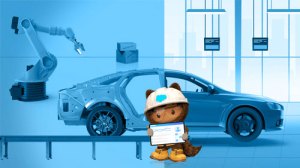With inputs from Aabha Lalwani, Principal Solution Engineer and Siddharth Gupta, Principal Solution Engineer
Over the past few years, India’s passenger car industry has had to grapple with a stringent regulatory environment and a rise in shared mobility. Then, in March 2020, came COVID-19 which brought the industry to a grinding halt with local lockdowns that resulted in record-low sales and shortages in manpower across the supply chain. Selling a car in this environment has never been more challenging, even in a growth market like India.
However, the third quarter of FY21 showed an uptick in rural demand, thanks to the festival season and safety concerns around the sharing economy. The industry now looks poised for better times ahead.
To succeed and monetise this situation, automakers need to be effective at mapping the prospect journey, and keeping engagement levels high.As they focus on building direct customer relationships, a single source of truth with 360-degree visibility into customer and vehicle data can make all the difference.
Changing customer behaviours
More customers are turning to digital channels for vehicle exploration, even in tier-2 and tier-3 cities.According to the Google Auto Gear Shift India 2020 study, 95% of new car buyers and 94% of used car buyers research online.
The report also found that dealers need to be digitally discoverable. Seventy-two percent of new car buyers researched online to find dealers—an increase of 12% over 2018.
Essentially, the value chain is shifting online. And as customer journeys go digital, automakers need to evolve technologically to be present where customers want them to be.
The challenge for current auto OEMs and their dealers is that eventhough the customer’s car buying journey may begin online, it often ends with a visit to the showroom for the final decision. Therefore, dealerships need to be able to offer phygital experiences that connect online and offline environments.
Omni-channel experiences are also key. Customers don’t just want to be engaged on multiple channels—they expect a unified and seamless journey across all these touchpoints. Automakers that can meet these expectations stand to gain.
Are existing processes andsystems limiting an omnichannel customer experience?
Managing consumer experiences in a vast country like India isn’t easy. There are many diverse cultures, buyer preferences, and needs, as well as varying levels of exposure to digital technologies.
Any platform for consumer engagement should be able to accommodate these differences and still provide a unified customer experience. It should also be easy to use, quick to roll out, and innovative.
Both the customer and the vehicle need to be at the centre of all technology interventions. To that end, many auto OEMs are building a Customer 360 and Vehicle 360 platform that can give them continuous insights about consumer behaviour.
Digitisation fuels growth
How can the auto industry take advantage of the digital wave to drive sales and growth? Here are a few key steps:
- Generate brand awareness to influence buying decisions: As we saw earlier, more consumers are researching online. They’re comparing models, looking at car configurations, clicking to buy, and more. Therefore, auto companies should have a strong website and social media presence.
- Also, with 85% of new car buyers making their purchasing decision in two months, auto OEMs need to be quick and effective in how they engage with prospects. This could make all the difference to whether the consumer chooses their brand or another.
- With a common CRM platform, automakers can quickly launch digital properties to capture leads, and then send these for verification to the call centre. From there, the leads can be passed on to a local dealership for follow-up.
- Build a digital storefront to delight the customer: In a COVID-19 world, no business can function only in the brick-and-mortar space—including automakers. Fifty-four percent of new car buyers would consider purchasing online if the option was available. So, it’s no surprise that auto OEMs are developing digital storefronts that can help consumers select a car, configure it the way they prefer, and get financing as well as insurance. In fact, digital channels are likely to see more uptake in the new normal.
- Digitalise dealerships to keep pace with customer demands: Recently, Shashank Srivastava, Executive Director, Marketing and Sales at Maruti Suzuki India Limited, was quoted in HT Auto as saying, “Interestingly, customers who enquire through our digital channel end up purchasing a car within 10 days. This reaffirms that with a robust online to offline platform executed by a digitally enabled salesforce, converting digital enquiries into sales becomes easier.”
- In India, dealerships continue to be important to the buying process. But as we saw earlier, they need to be digitally discoverable. With a single platform, dealers can smoothly extend the customer journey that began on the automaker’s digital properties. Also, by going digital, dealerships get the added advantage of managing inventory better based on retail performance.
- Unify marketing, sales, and service to deliver seamless customer experiences: To provide an omni-channel experience, brands need to break down data silos and build a 360-degree view of the customer. This can help enable more personalised and contextual customer conversations that lead to greater cross-sell and upsell opportunities, as well as an overall increase in the customer lifetime value.
- AsRobert Savin, Chief Digital Officer at Bentley Motorssays, “We want to make sure there’s a consistent journey and piece it all together, be it digitally or physically, into a very consistent customer experience.”
- Measure KPIs to respond faster to customer trends: Automakers would do well to track metrics such as test drive conversion ratio, booking ratio, net promoter score, and customer lifetime value. These indicators help quantify customer satisfaction levels, so that teams can make data-driven decisions and react in a timely manner.
- Be future-ready to stay ahead of the curve: Customers are shortlisting more cars than ever. Many are looking for connected cars, premium top models, and subscription-based services. Preferences are also trending towards contactless engagements. Brands should be ready to meet these needs and create exceptional experiences faster and easier.
All the above requirements can be met with a robust CRM platform that helps deliver seamless and consistent customer experiences across physical and digital touchpoints. The platform should benefit the whole ecosystem—customers, dealers, sales, service, marketing, production, and suppliers.
How can Salesforce help?

Salesforce can support you through the entire customer journey. During the awareness stage, our platform helps you listen to customers, develop personalised offers, and enabled targeted advertising. It also strengthens engagement with customers at every touchpoint, including websites, social, mobile devices, e-commerce, and dealerships.
With strong integration capabilities, Salesforce optimises the benefits gained from existing DMS and legacy systems. Plus, it helps you create connected experiences to sell and service better, thus building customer satisfaction and advocacy.
Today, most bets are on electric vehicles that could end up making engines redundant. This means that automakers will need to reimagine revenue streams. Salesforce can help you adopt new ways of generating revenue through subscription-based and pay-as-you-go models.

























